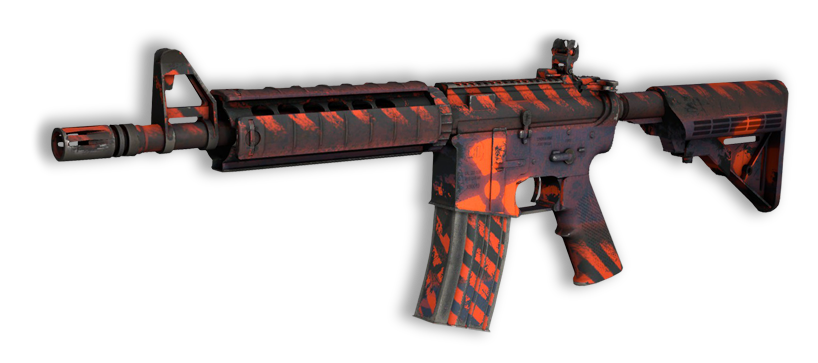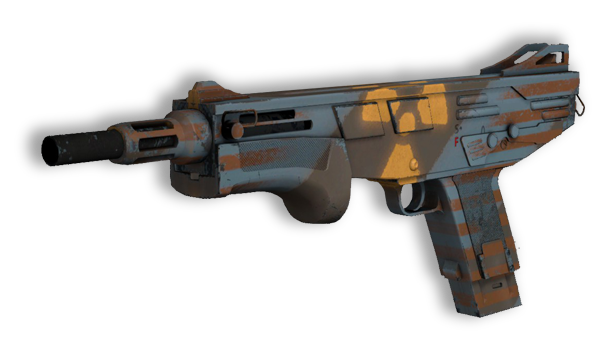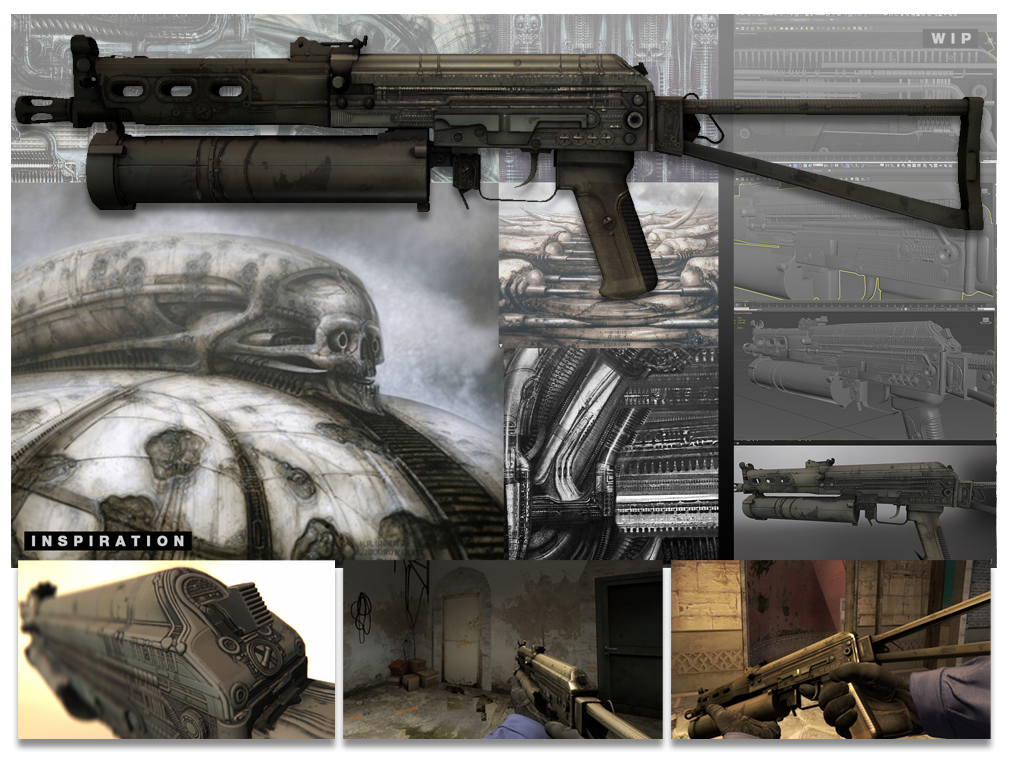
Style Guide for weapon finishes
In the Style Guide below, we’ll cover the basics of how the Counter-Strike Team selects weapon finishes to include in a Weapon Case. Our goal is to make sure you have enough information to maximize the chances of your designs being selected, and to address some common questions that we hear from artists who are getting started.
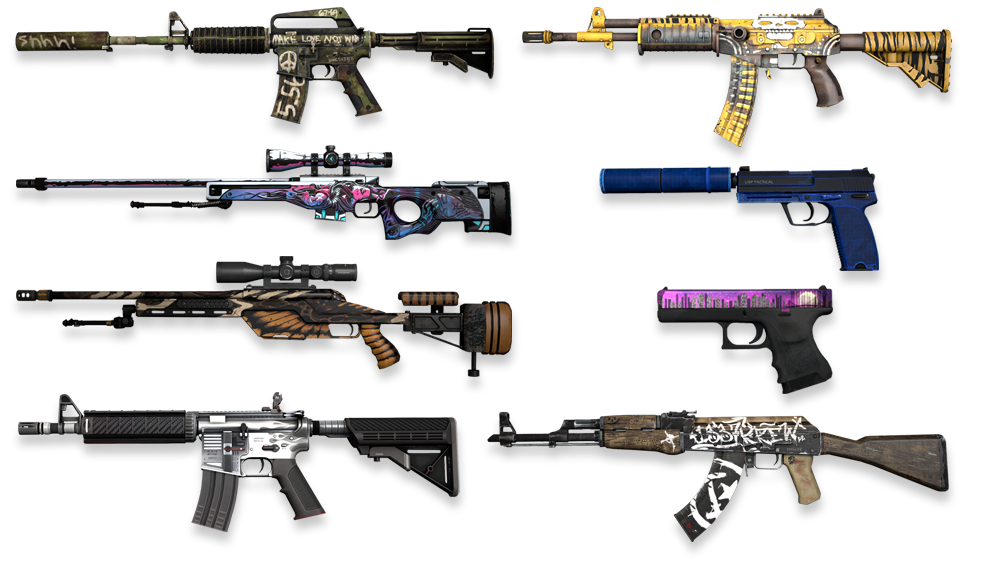
Although we’re providing specific examples and details about our process below, it’s important to remember that there is a lot of competition for slots in a weapon case – your designs are competing with all of the other designs on the Workshop. So while you can improve your chances by following the Style Guide below, ultimately there is no approach or level of quality that will guarantee successful or consistent selections in weapon cases.

Weapon Case Contents
The number of weapons slots in a case are limited, and CS2 has more weapons on the roster than slots in the case, so we rotate weapons in and out of case selection.
The weapons we plan to feature in a case are decided before we start selecting finishes, so often a great weapon finish can appear on the workshop, but it might take one or two cases before it ships. The most successful contributors tend to design finishes for all tiers on a large variety of weapons.
How we select weapons
Creating well executed, highly salient finishes that target higher tiers will get you noticed by the community. However, the competition for high utility, high salience weapons is fierce and only represents one or two slots in any case, so if your goal is to be selected you might want to think about adding some subtler, just as well executed finishes for lower utility weapons. We look at what's popular in the community and we actively dig into the workshop to seek out finishes from both new and established contributors.
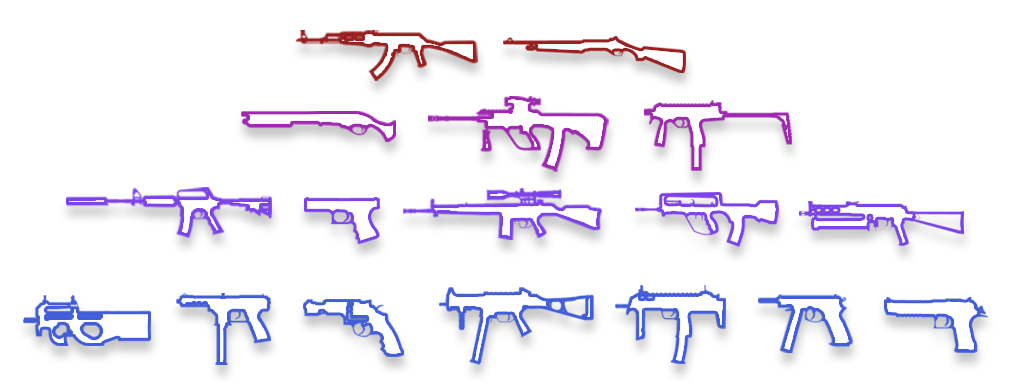
Modifying a weapon finish and uploading multiple versions that can fit in different rarity tiers can increase your chances of being selected. This allows more flexibility for that finish to match the weapons we plan to feature in future weapon cases.
The most successful workshop artists contribute high quality finishes across all rarity tiers and do not optimize for only Covert finishes. Covert designs are good at getting the community to notice you, and that usually leads us to check out the rest of your workshop. In fact, most of the Mil-Spec designs we ship are discovered after reviewing artists with a broad portfolio of submissions.
Community Voting
When your submission is uploaded to the workshop, the voting system provides insight into the community’s level of excitement towards your finish. This can be a good tool to evaluate the direction of your work, but it has limitations. As an example, the most desirable finishes will often (but not always) get the most upvotes, but those desirable finishes are almost always the most salient and that only really helps select finishes for the top tiers of the case. It's not great at helping us find weapon finishes for the lower tiers, so we frequently depart from workshop votes when making selections.
Would you like to see this item officially accepted and supported in Counter-Strike: Global Offensive?
Yes No thanks Ask me again later
The community also tends to upvote established finishes they have seen in previous cases, but we typically prefer to keep cases feeling fresh by shipping both new and established finishes. If a finish is in a style that the community hasn’t seen before it may not be popular in the workshop, but that doesn’t mean it won’t be a big hit if we include it in a case.
The Importance of Salience
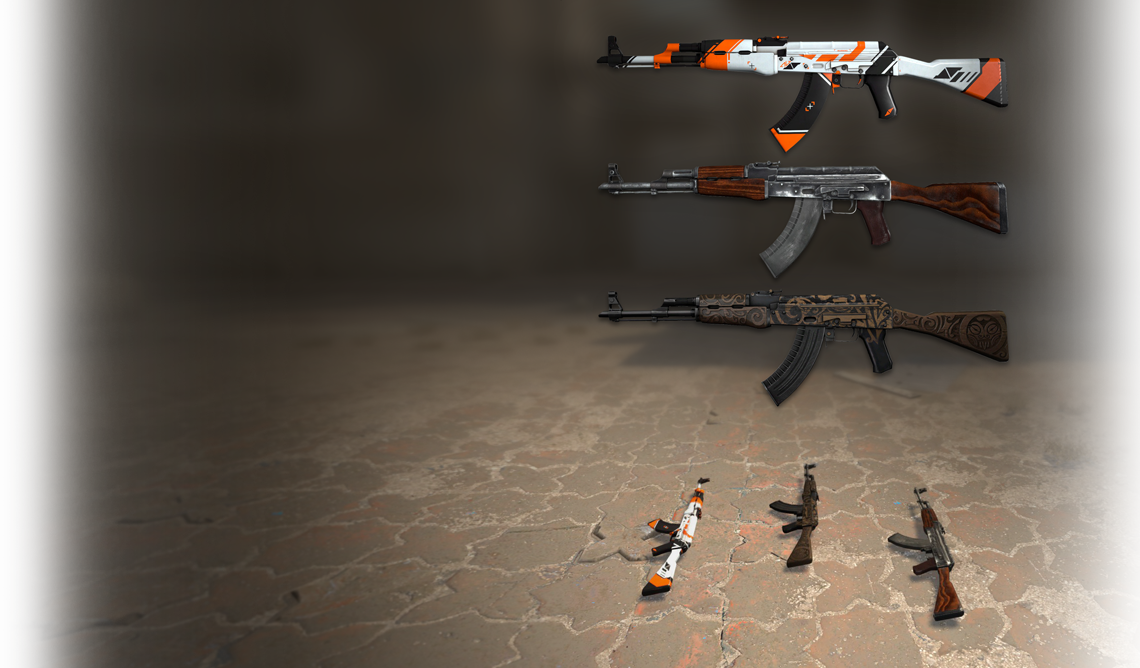
How salient something is describes how noticeable or recognizable it is.
When we look at things, we recognize patterns as well as contrast both in value and in color. For a design to be highly salient it needs to have strong contrast in value or color (or both) but it also needs to be distinct from other designs and readable.
Salience and Rarity Tiers
The tiers in a case, running from Mil-Spec (blue) up to Covert (red), express the rarity of an item and rarity corresponds closely to the desirability or prestige of an item. So we use some basic rules for the different tiers of a case.
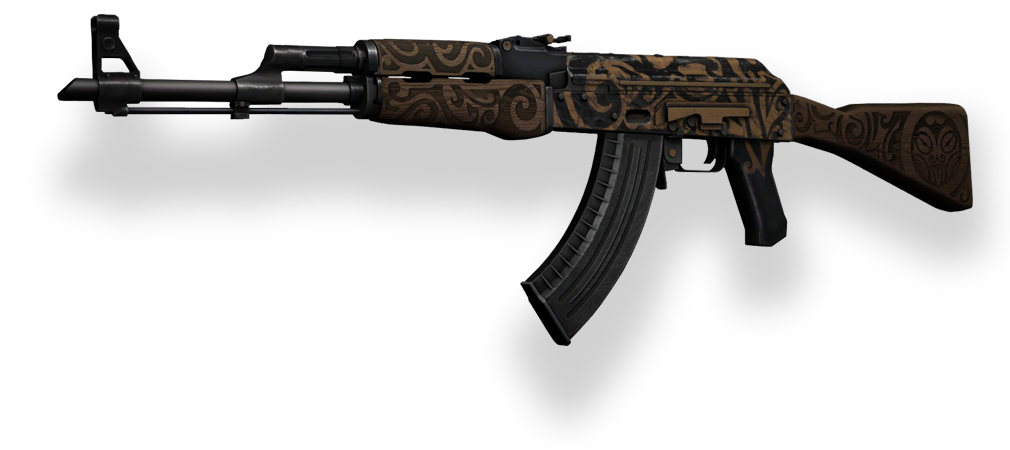
Military Spec (blue)
Least salient items
These finishes are muted, harder to read at a distance, and might look somewhat similar to each other. The audience for a Mil-Spec item is the player holding the item.
Restricted (purple)
Slightly salient items
These finishes are distinct but not flashy and use slightly stronger color and contrast than Mil-Spec. The audience for a Restricted item is the player holding the item and other players in close quarters.

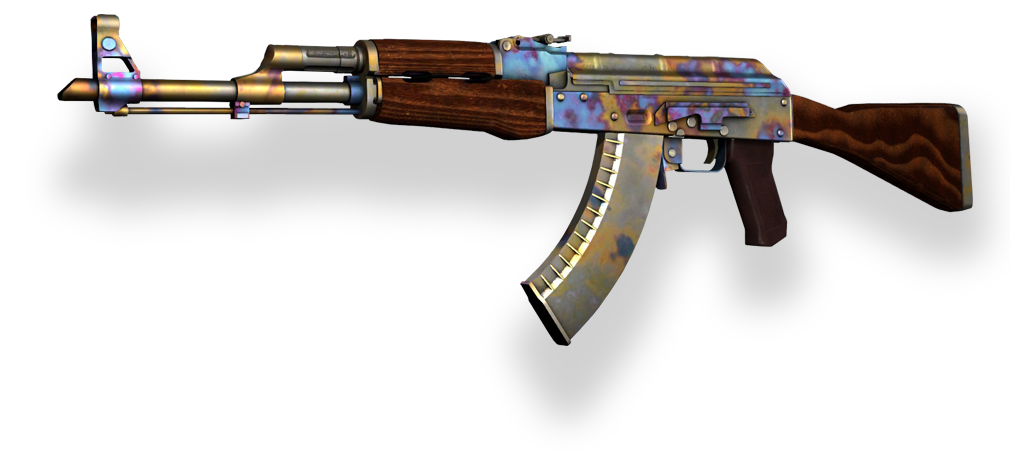
Classified (violet)
More salient items
These finishes are distinct noticeable patterns, make broad use of contrast, and often make use of vibrant colors. The audience for a Classified item is the player holding the item and other players in their general vicinity.
Covert (red)
The most salient items
These finishes have distinct 'loud' patterns, are recognizable at a distance, and are unique relative to other Covert items (e.g., you have to be able to tell one Covert AK from another). The audience for Covert items is everyone in the match.
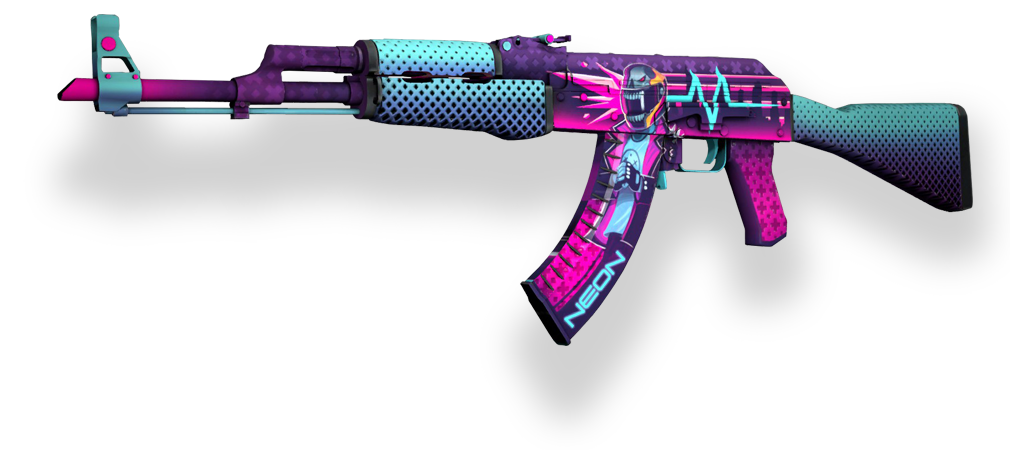

Saturation & Contrast
Keep saturation and contrast in mind when you’re creating your finish as adjustments made here will heavily impact the salience of the weapon along with its potential rarity tier. It can be useful to explore the finish at different rarity tiers and potentially submit different versions.
What you should certainly try to avoid though are colors that are either too bright or too dark, this is to say that the ‘local colors’ on a given finish should still be able to get darker or lighter when they go into game (if you use pure black on a weapon finish it will look darker than most of the shadows in game, and probably look ‘broken’, similarly if a colour is too bright or too saturated it can look significantly brighter than it’s surroundings (and end up looking like a light source).
Low Violence
All submissions containing skulls or blood should also have a low violence submission. Not including a low violence version can make it more difficult to be selected. (CSGO is available throughout the world, and some territories have stricter guidelines for content than others)

Patterns
All patterns should be seamless. Using offset and/or rotation values allow the finish to have more variety and unique applications. Most patterns can be used to create multiple finishes that fit into different rarity tiers by adjusting values and colors or in some cases adding an Easter egg to the pattern that only shows up in certain rotations or offsets.

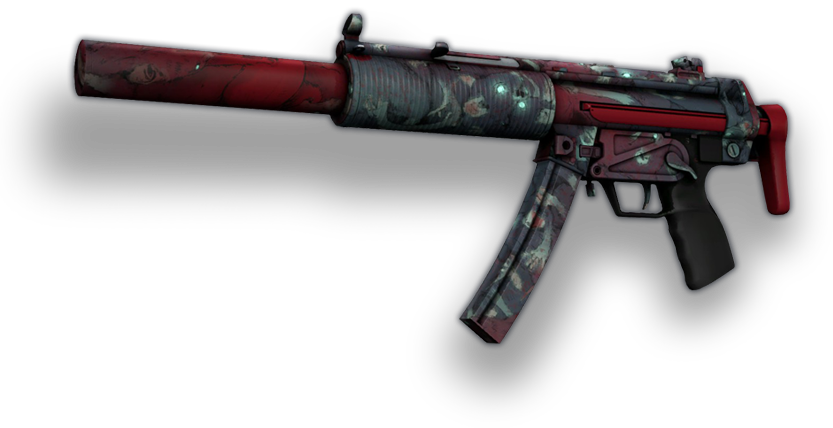
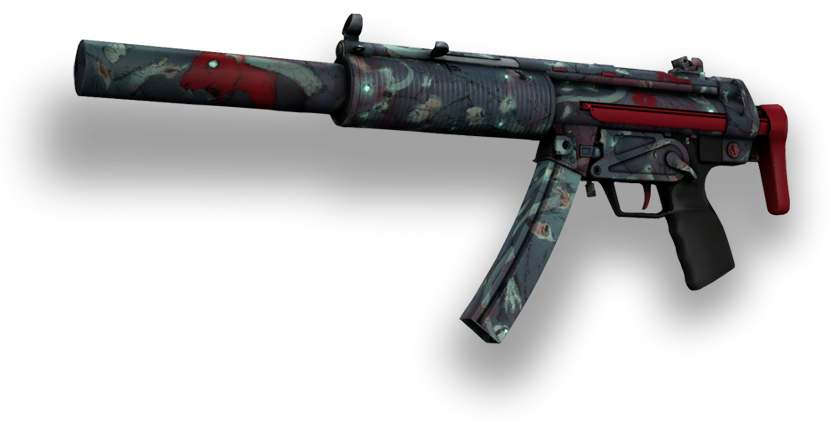
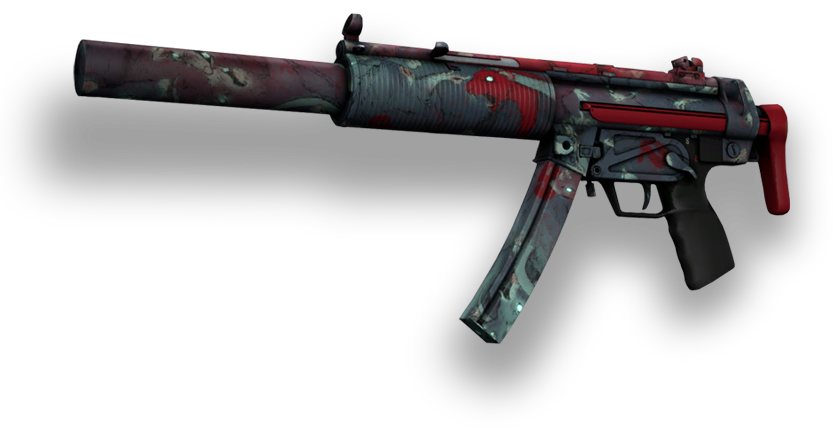
Workshop Submission/Page
It is important for us to see the finish as it will look in the game. When submitting your finish to the workshop make sure to include screenshots of the weapon inspect, in hand, and side view without any post-processing. You are welcome to create promotional images, like those shown below, which you think best show off your work.
Concept art, mood boards, or images you may have pulled inspiration from are encouraged but not required. All elements of the submission need to be original work (including patterns and textures). A submission should never contain another artist’s work even if that work is made freely available.
Player Perspective
Creating a finish that is pleasing when held in hand and not just from the side while inspecting can be that detail that sets your submission apart from others. Incorporating elements for a user to enjoy from the in-hand perspective is highly valued as the user will spend most of their time looking at your design this way.
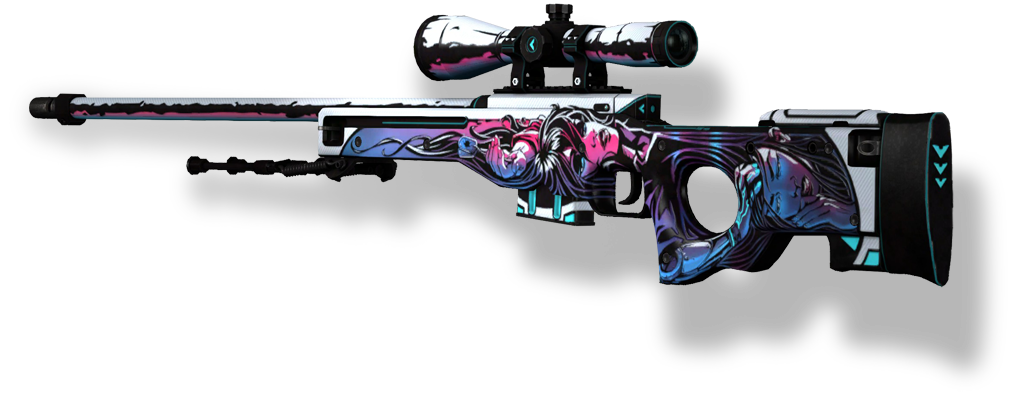
Illustrations
When making an illustrated finish it is better when it interacts with the weapon and feels like it was designed for the weapon, not just slapped on the side. Finding new and unique ways of making the illustration work with the shape of the weapon is a great way to get noticed.
Final Recommendation
This guide is designed to help Workshop contributors understand our decision making process when selecting finishes and what considerations they should make when creating them. Following this guide can help increase your chances for selection in future weapon cases, but there are no guarantees and there will always be exceptions to the rules. We encourage contributors to push the boundaries to create new and interesting finishes while using the information above as a guideline.
